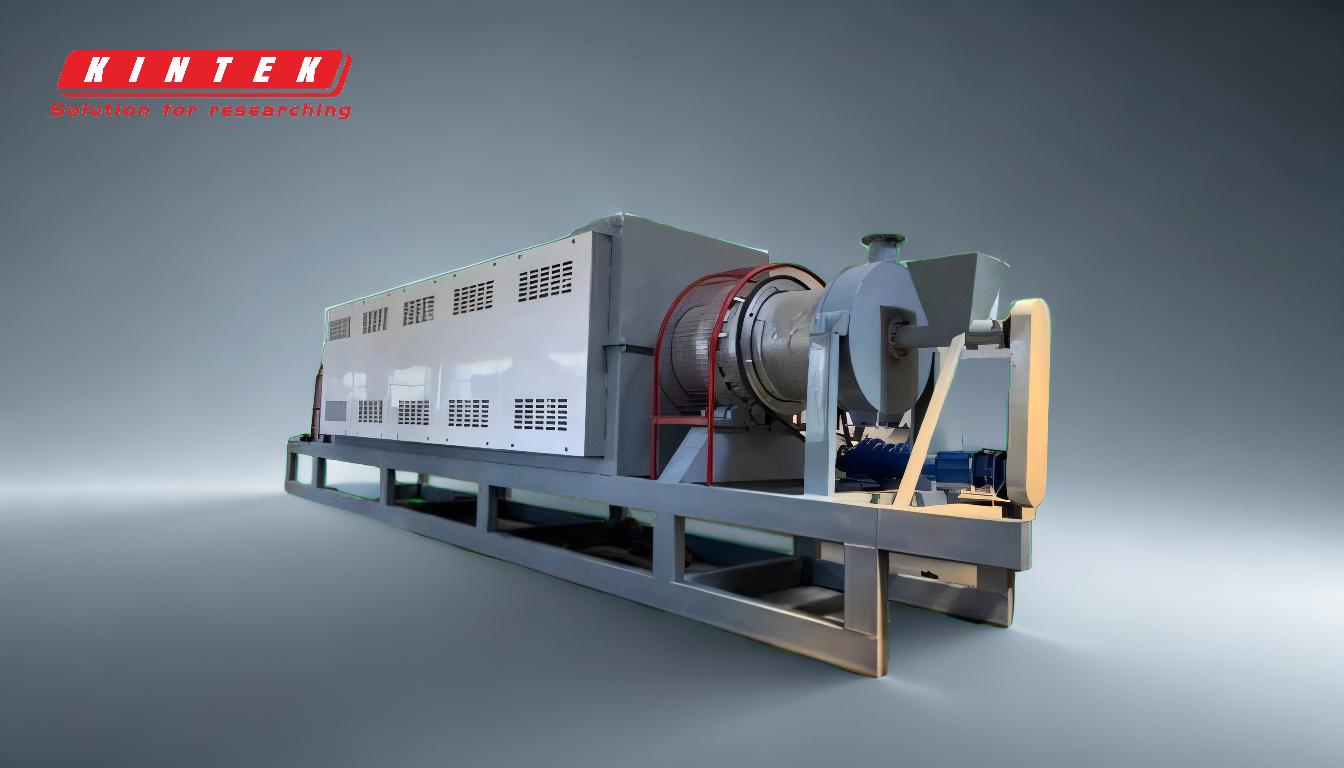Pyrolysis, a process that decomposes organic materials at high temperatures in the absence of oxygen, presents several significant hazards. These include the risk of explosions due to the high temperatures exceeding the autoignition temperature of produced gases, the release of toxic gases such as carbon monoxide, and environmental harm from gases, liquids, and ashes. The greatest risks occur during system startup, shutdown, intermittent operation, or operational upsets. Inert gas purging is essential to manage explosion risks, and failure to keep oxygen out has led to accidents. Additionally, pyrolysis plants face challenges related to fire and explosion hazards, emission control, occupational safety, and waste handling. Safe operations require careful monitoring and control of high temperatures and pressures.
Key Points Explained:

-
Explosion Risks:
- High Temperatures: Pyrolysis operates at temperatures that exceed the autoignition temperature of the produced gases. If oxygen is present, this can lead to explosions.
- Critical Phases: The greatest risk of explosion occurs during system startup, shutdown, intermittent operation, or operational upsets.
- Inert Gas Purging: To manage these risks, inert gas purging is essential. Failure to keep oxygen out has historically led to accidents.
-
Toxic Gas Emissions:
- Carbon Monoxide: One of the primary toxic gases produced during pyrolysis is carbon monoxide, which poses significant health risks.
- Other Toxic Gases: Pyrolysis can also release other harmful gases, contributing to environmental and occupational hazards.
-
Environmental Hazards:
- Gases, Liquids, and Ashes: The process releases various by-products that can harm the environment if not properly managed.
- Back-up Fuel: There is a need for back-up fuel, which may be produced during pyrolysis, adding another layer of complexity and potential hazard.
-
Operational Hazards:
- Fire and Explosion: Pyrolysis plants are prone to fire and explosion hazards, requiring stringent safety measures.
- Emission Control: Managing emissions is crucial to prevent environmental contamination and ensure compliance with regulations.
- Occupational Safety: Workers are at risk from high temperatures, toxic gases, and potential mechanical failures.
- Waste Handling and Storage: Proper handling and storage of waste products are essential to mitigate risks.
-
High Temperatures and Pressures:
- Monitoring and Control: Operating a pyrolysis furnace involves high temperatures and pressures, necessitating careful monitoring and control to ensure safe operations.
- Equipment Integrity: Maintaining the integrity of equipment under these extreme conditions is critical to prevent accidents.
-
Accident Prevention:
- Inert Gas Purging: As mentioned, inert gas purging is a key preventive measure to avoid explosions.
- Operational Protocols: Establishing and adhering to strict operational protocols during critical phases (startup, shutdown, etc.) can significantly reduce risks.
- Safety Training: Comprehensive safety training for personnel is essential to handle the complexities and hazards associated with pyrolysis.
In summary, while pyrolysis is a valuable process for decomposing organic materials, it comes with significant hazards that require careful management. Explosion risks, toxic gas emissions, environmental impacts, and operational challenges necessitate stringent safety measures, including inert gas purging, careful monitoring, and comprehensive safety protocols. Addressing these hazards effectively is crucial to ensuring the safe and efficient operation of pyrolysis plants.
Summary Table:
| Hazard Type | Key Risks | Prevention Measures |
|---|---|---|
| Explosion Risks | High temperatures exceeding autoignition, critical operational phases | Inert gas purging, strict operational protocols |
| Toxic Gas Emissions | Carbon monoxide and other harmful gases | Emission control systems, proper ventilation |
| Environmental Hazards | Release of gases, liquids, and ashes | Proper waste handling, backup fuel management |
| Operational Hazards | Fire, explosion, occupational safety risks, waste handling challenges | Safety training, equipment integrity checks |
| High Temp & Pressure | Equipment failure due to extreme conditions | Continuous monitoring, control systems |
Ensure your pyrolysis operations are safe and efficient—contact our experts today for tailored solutions!









